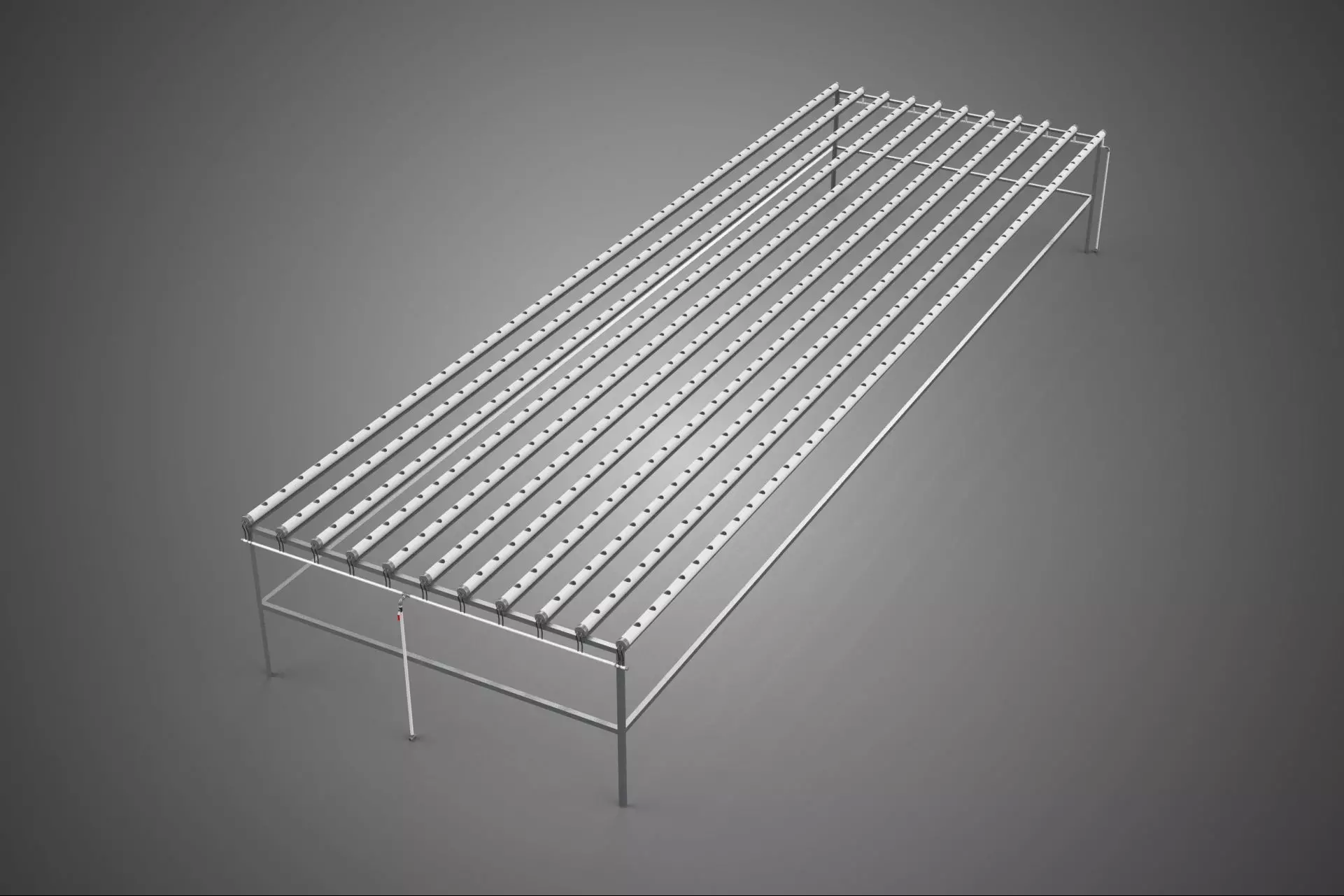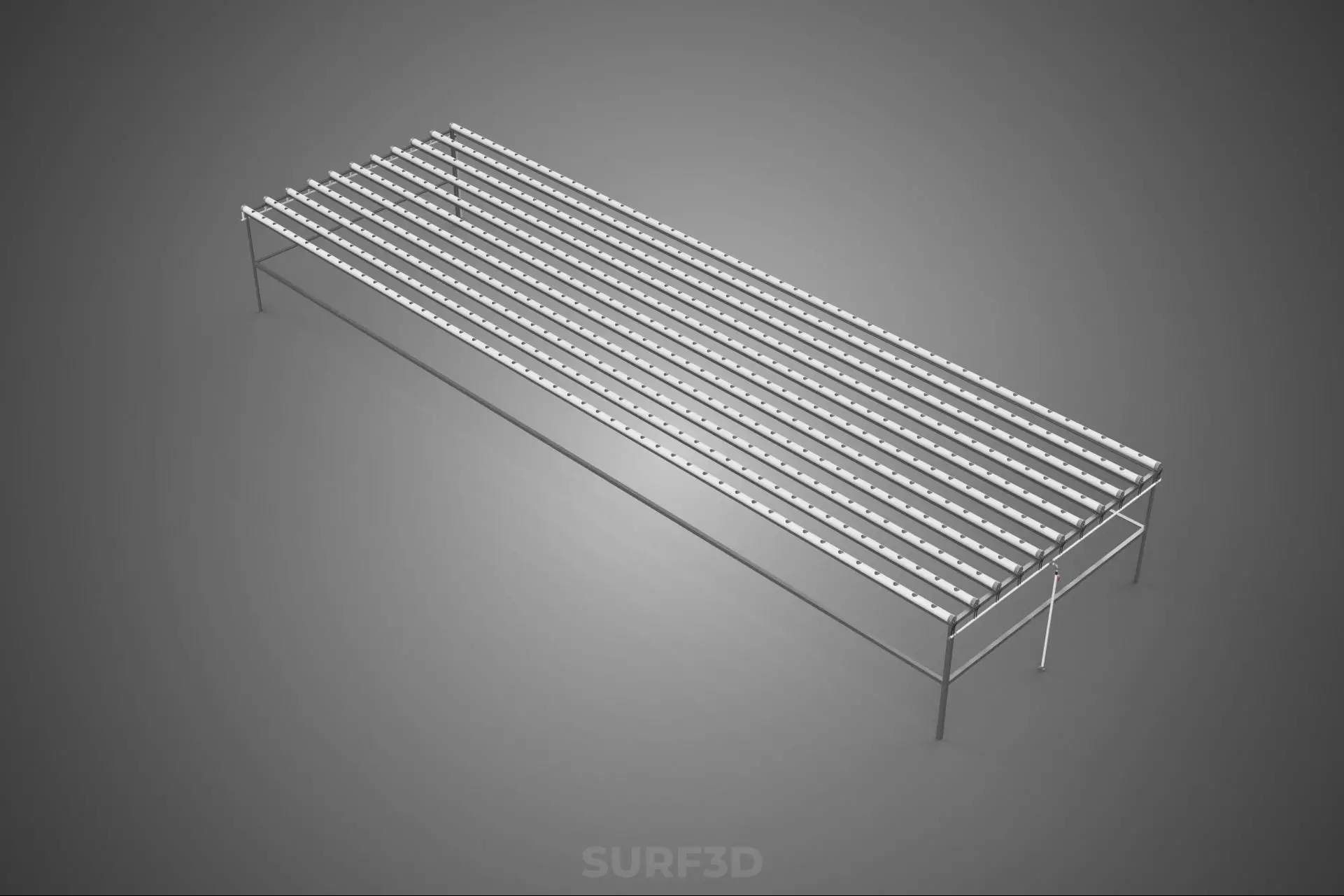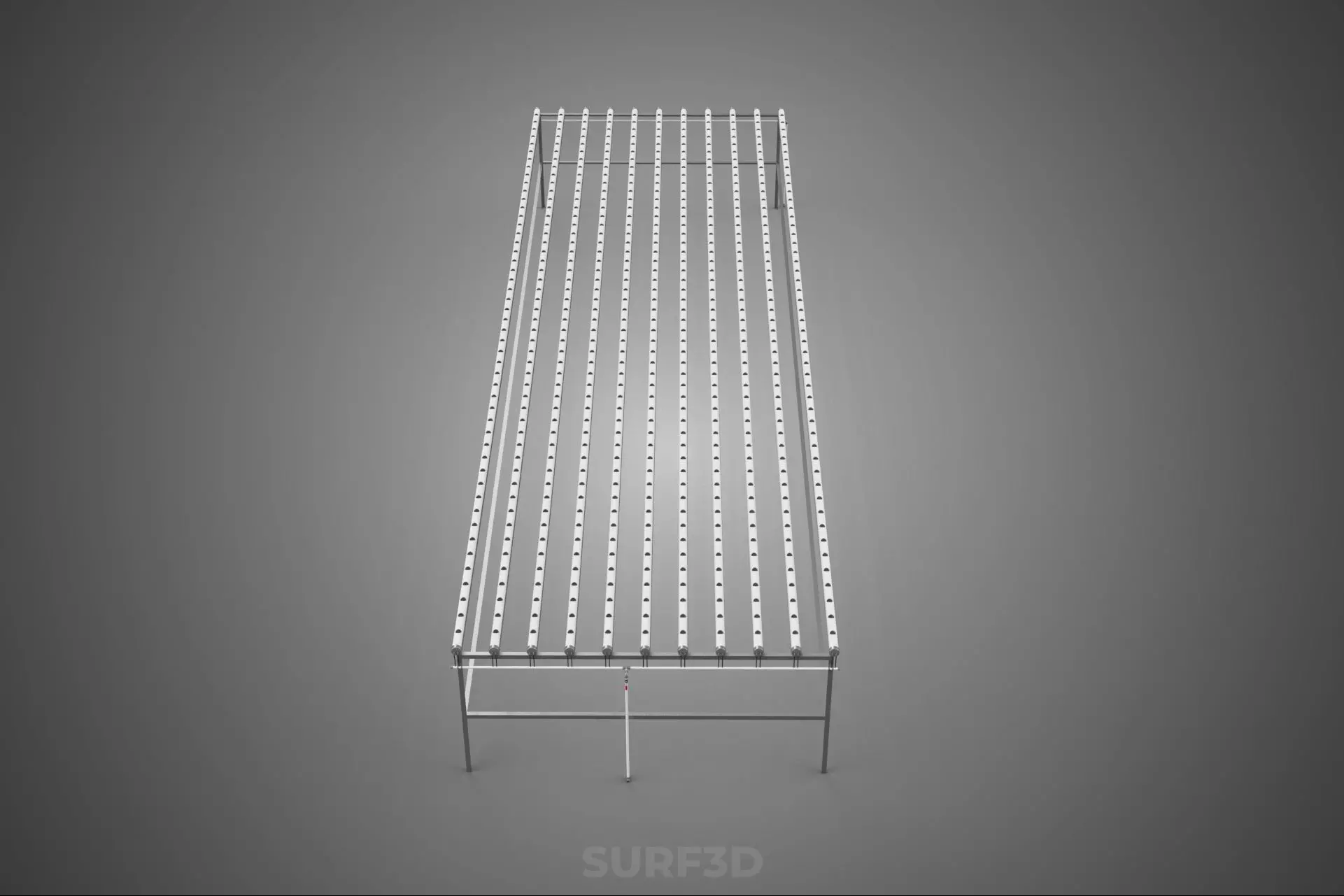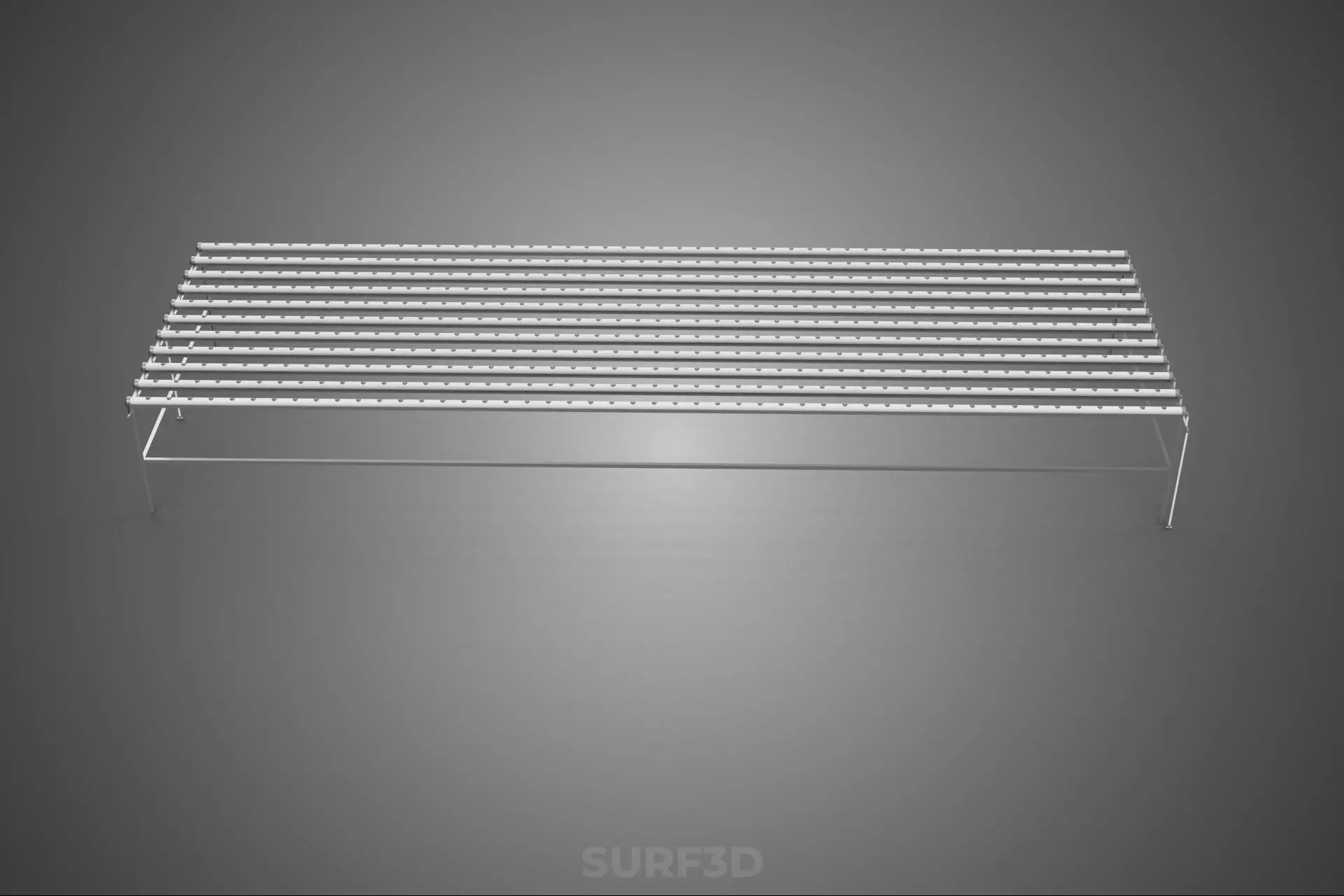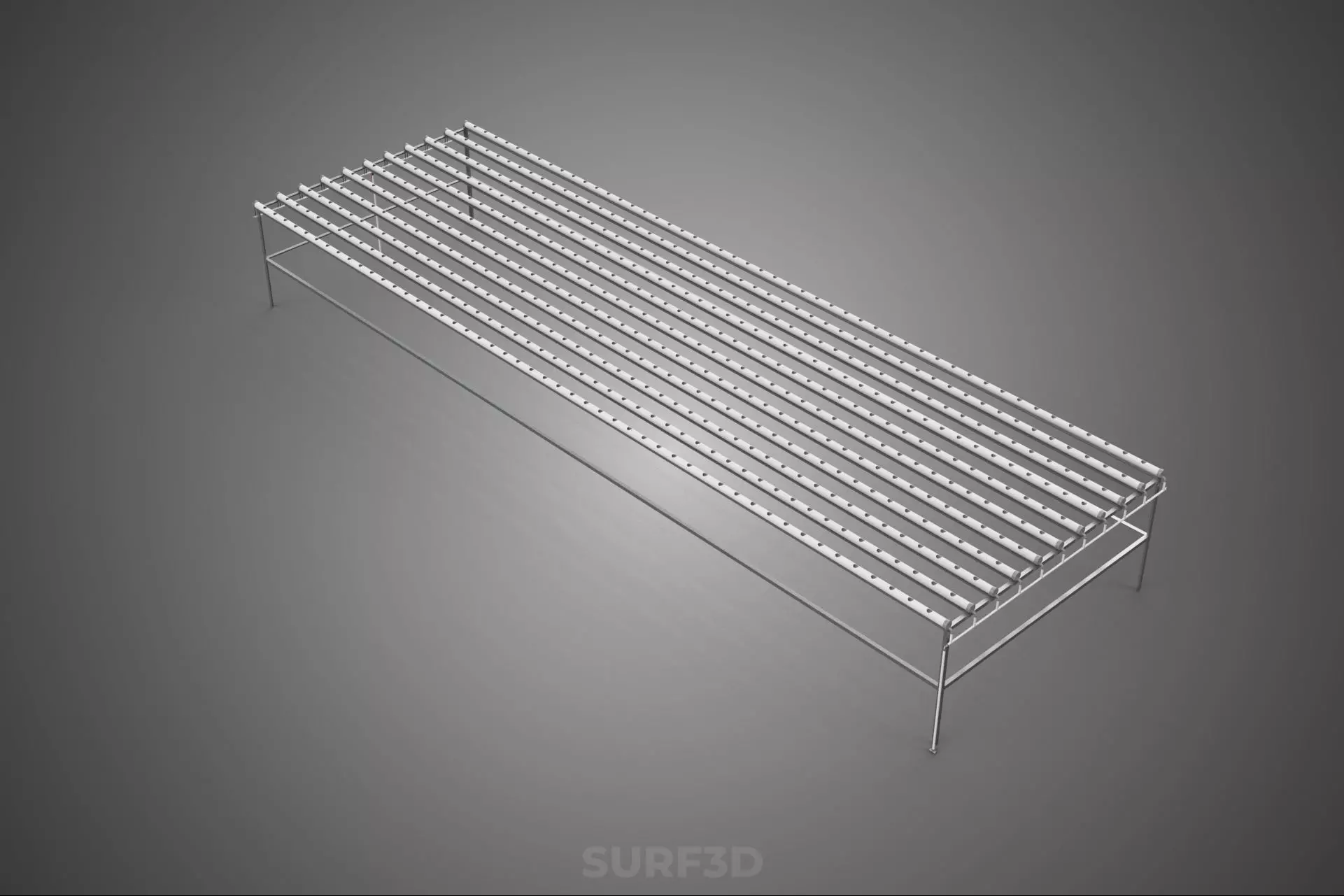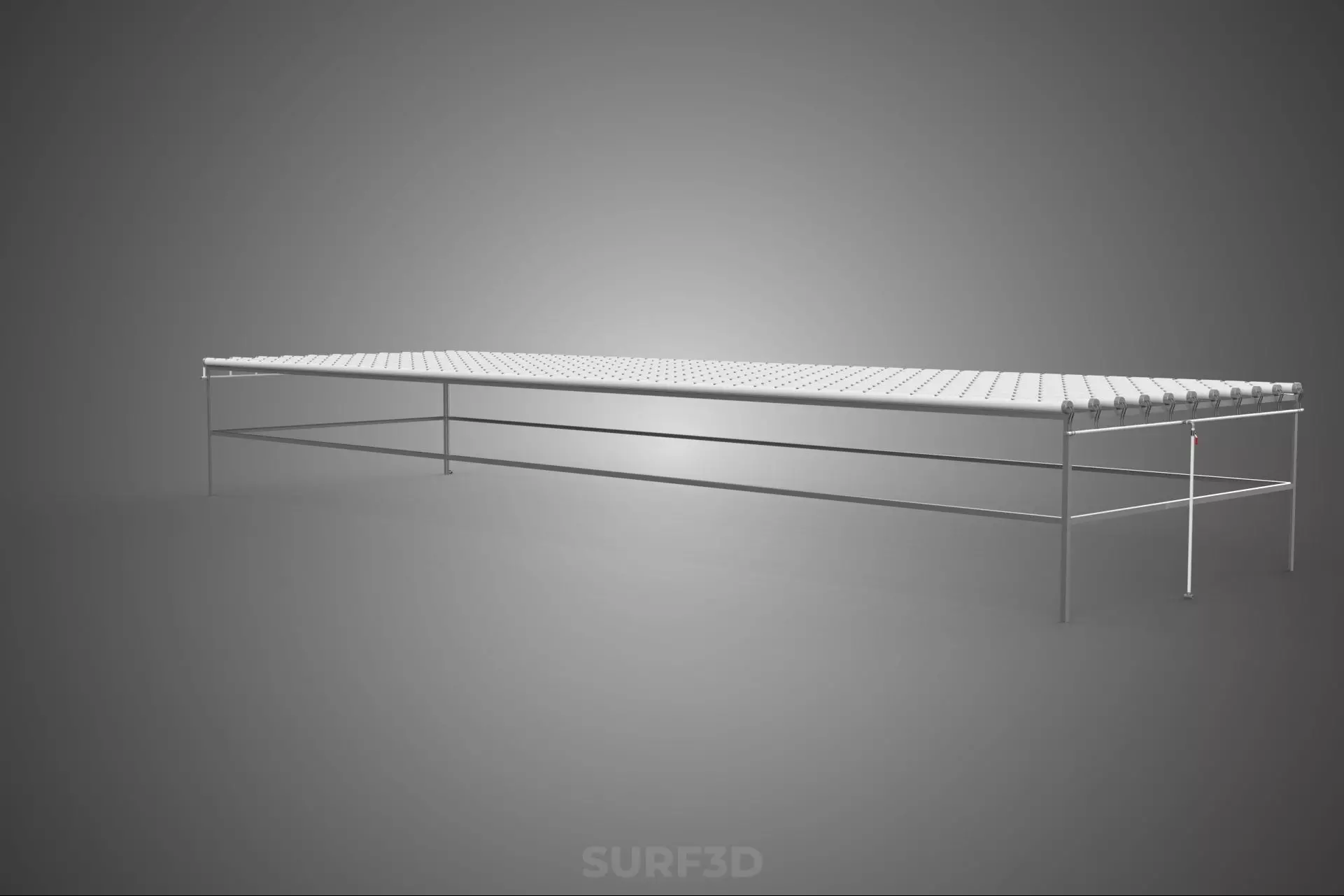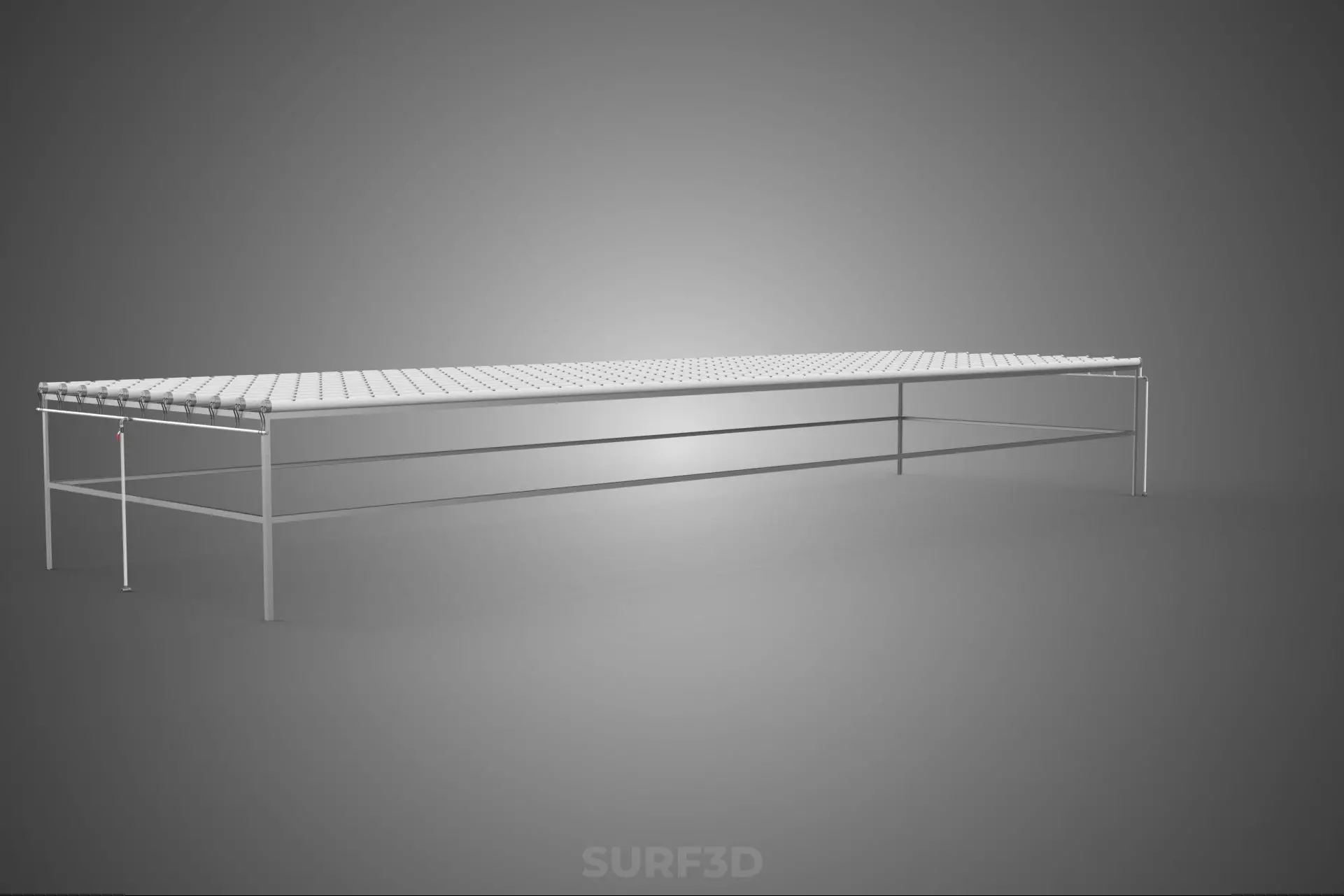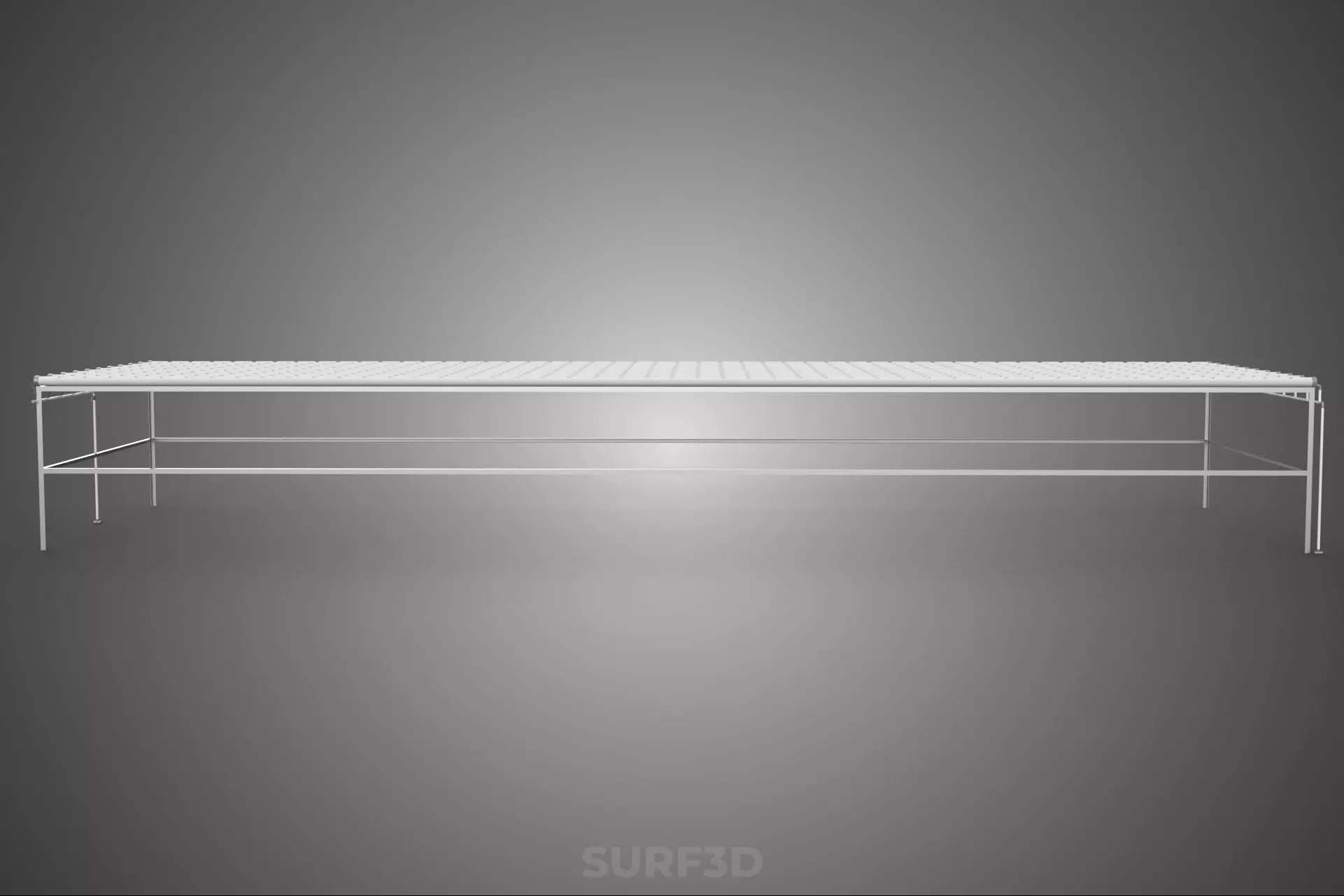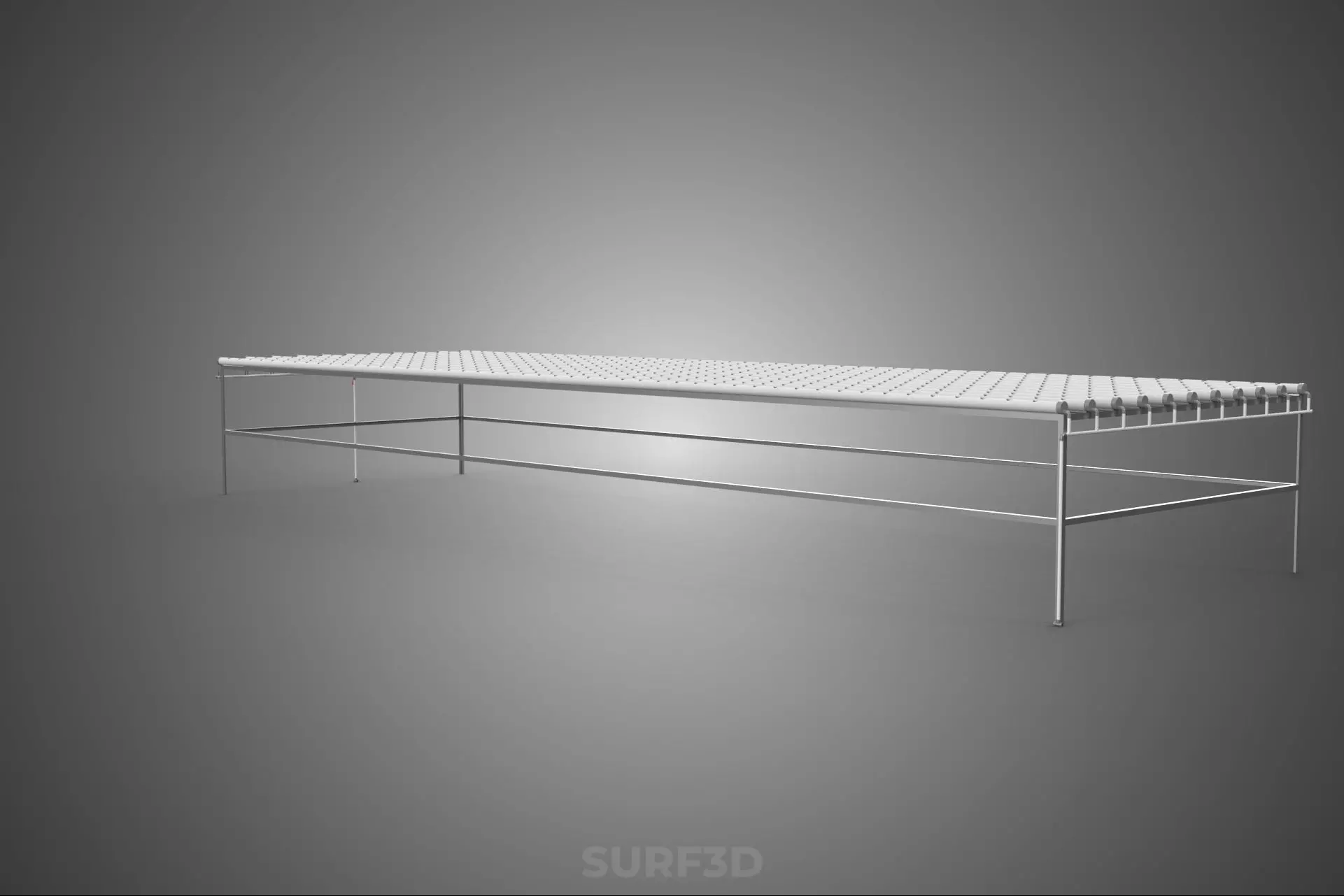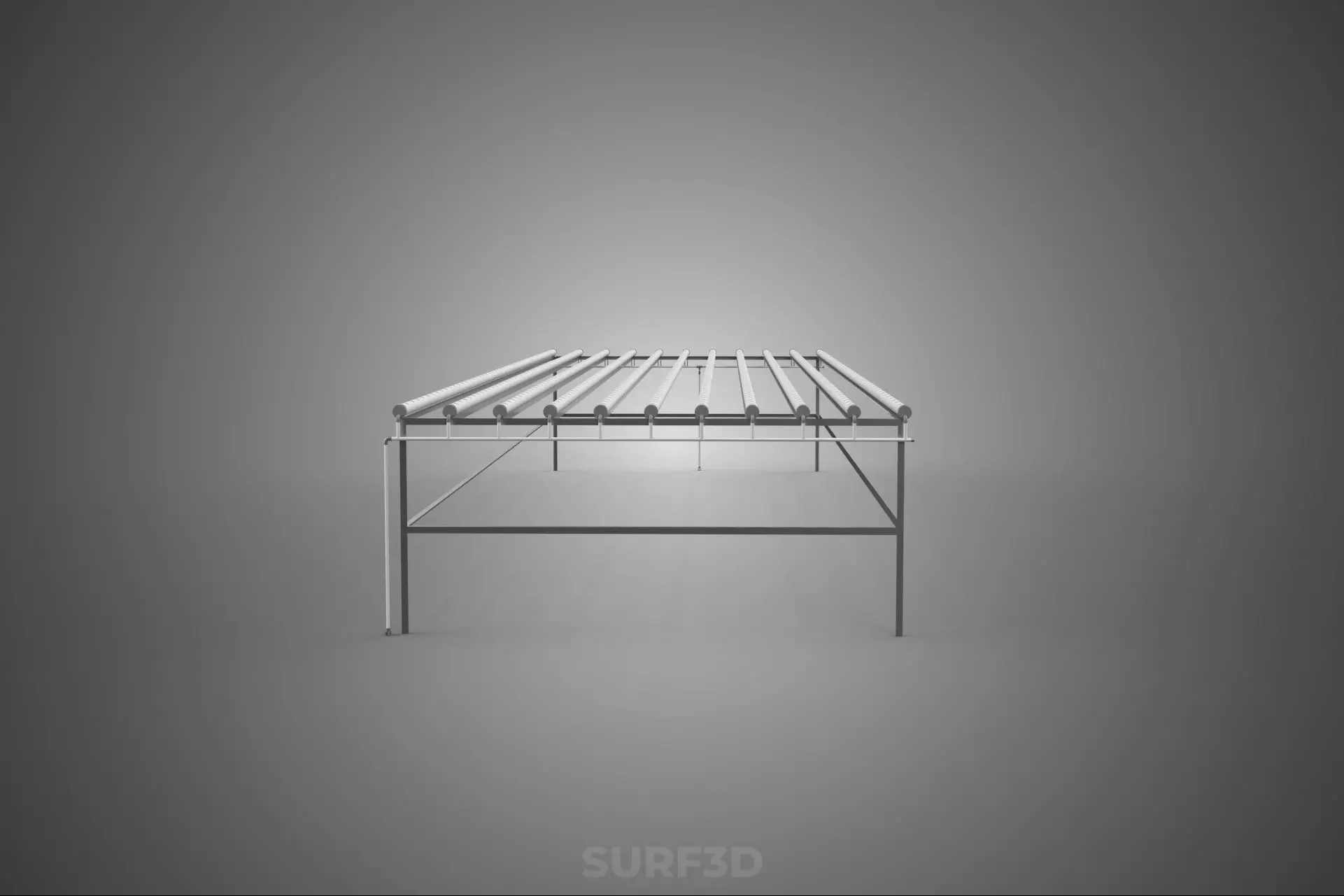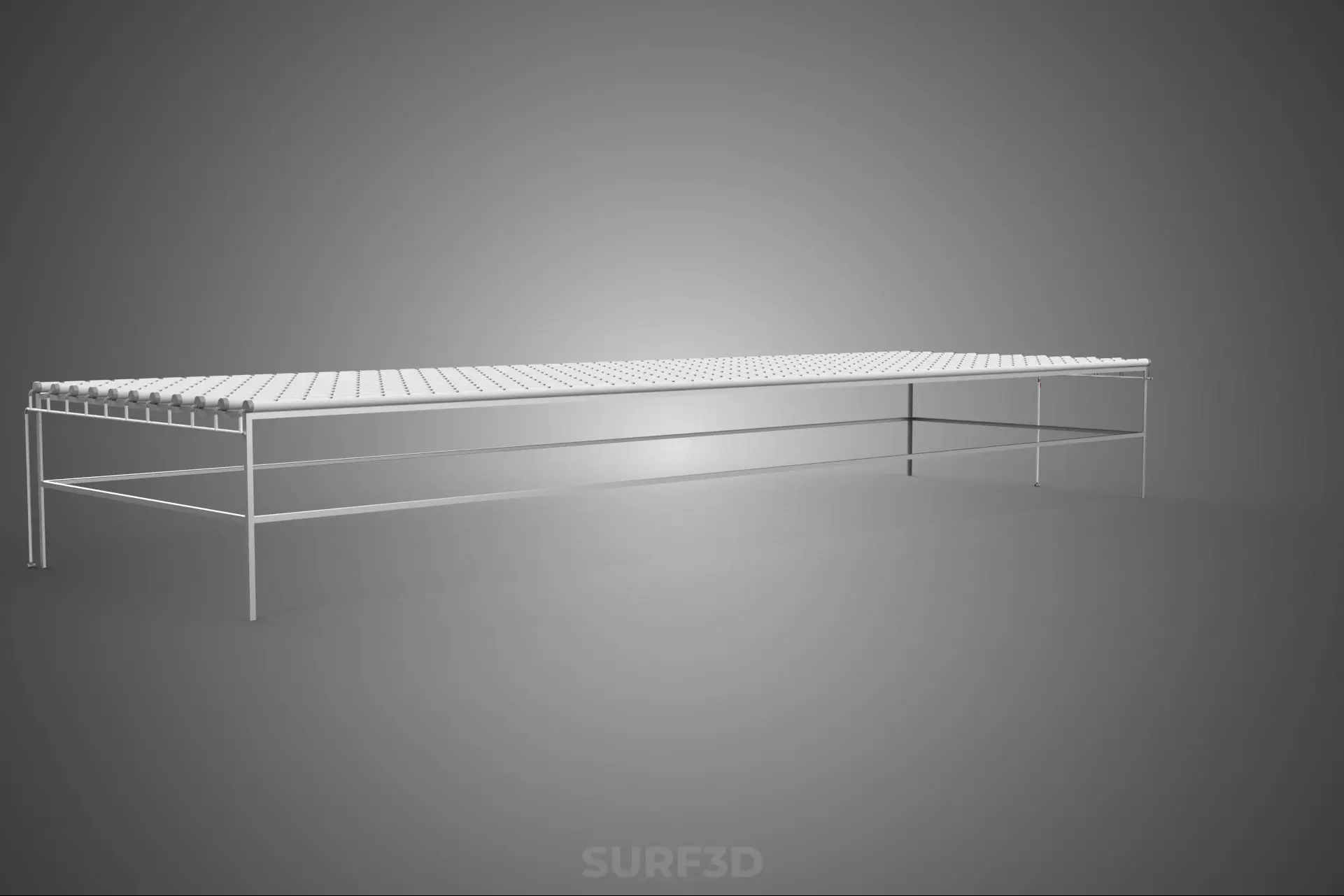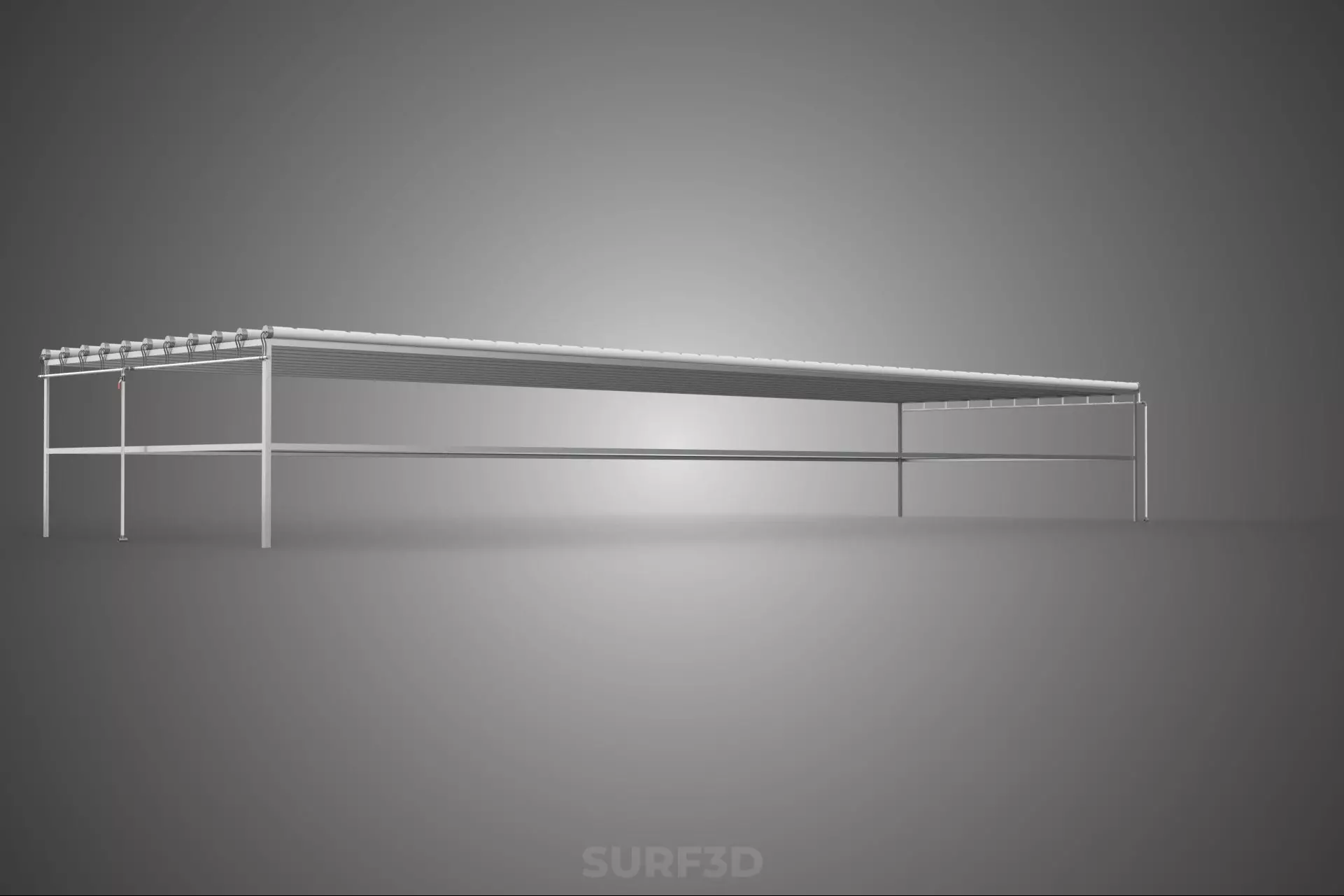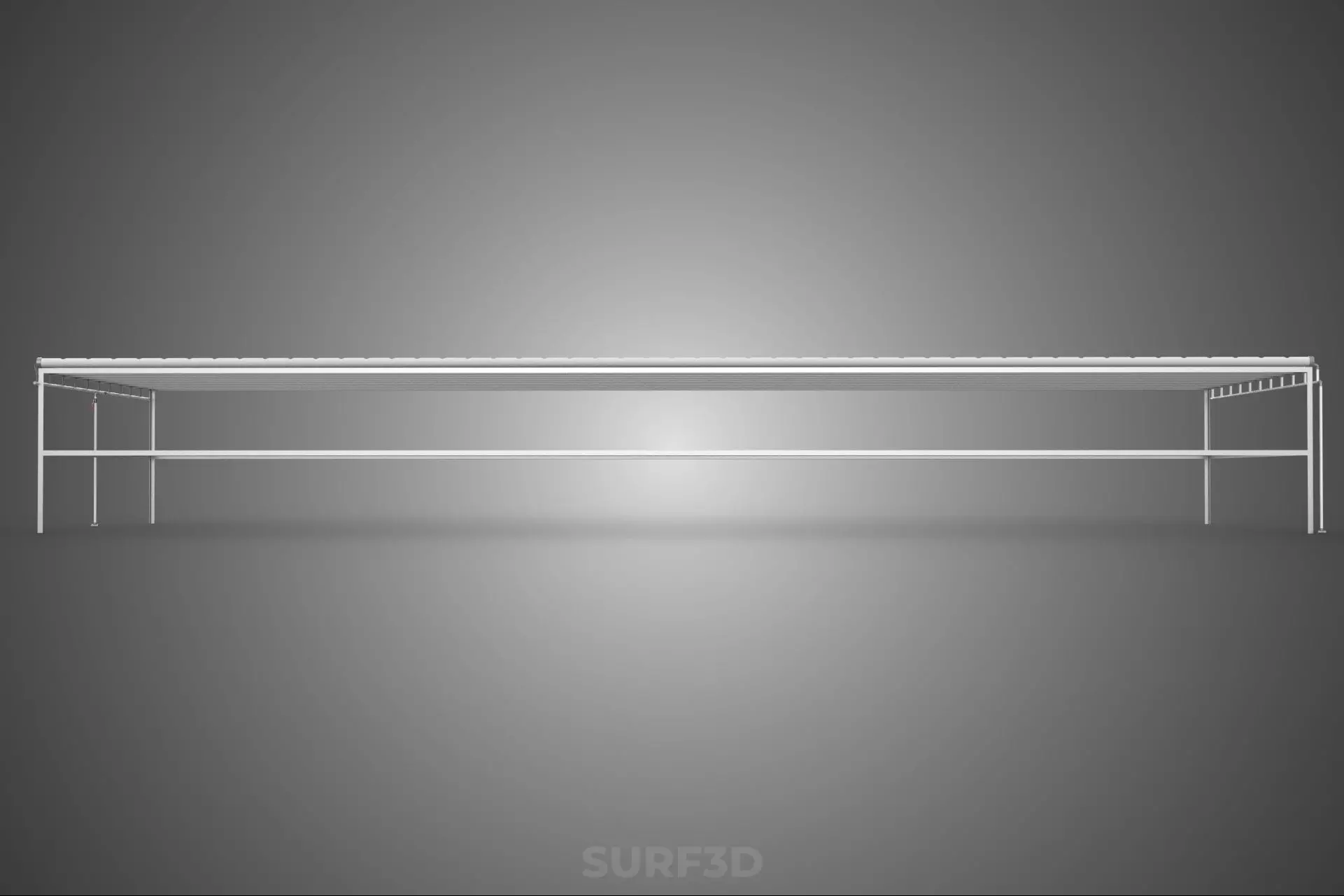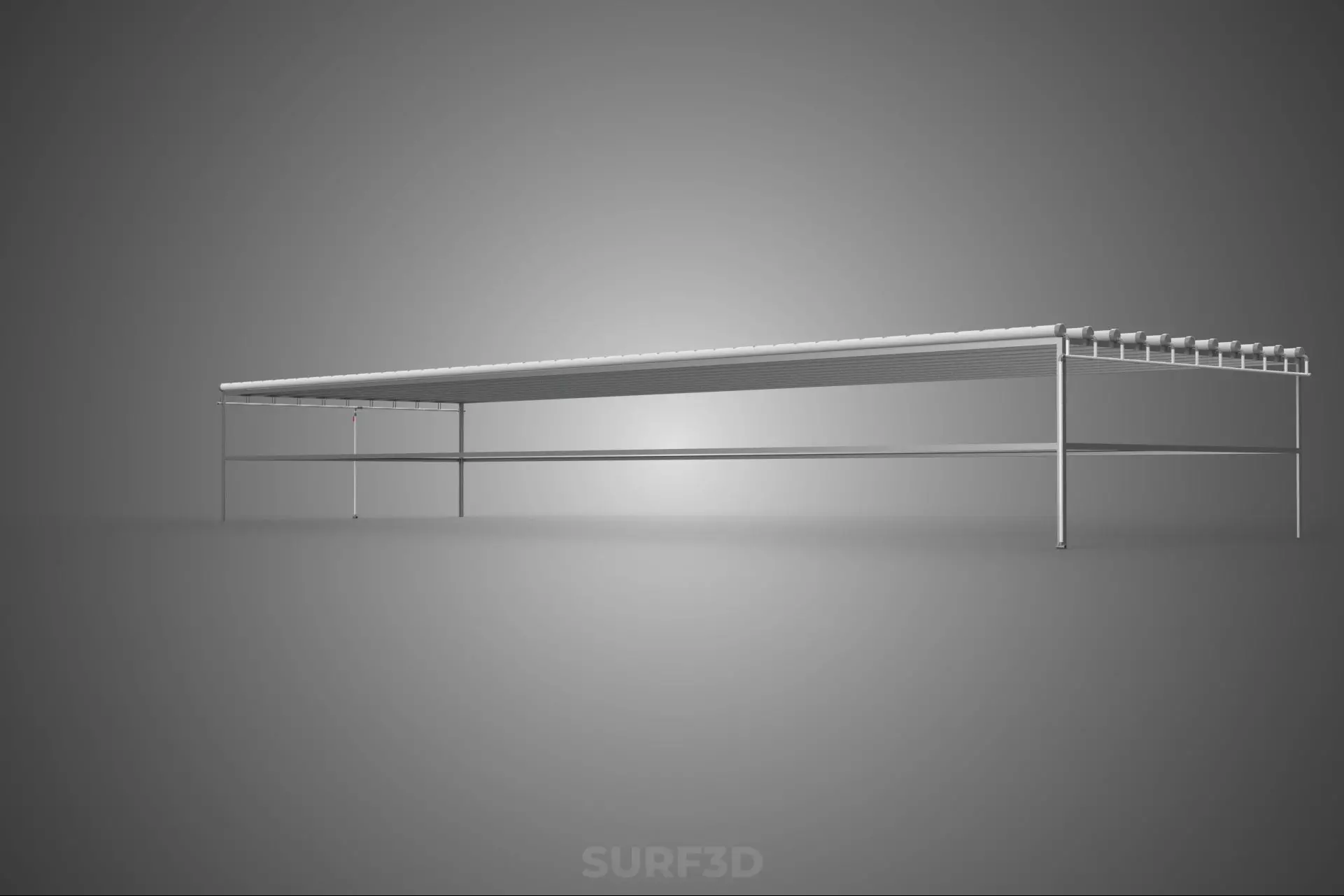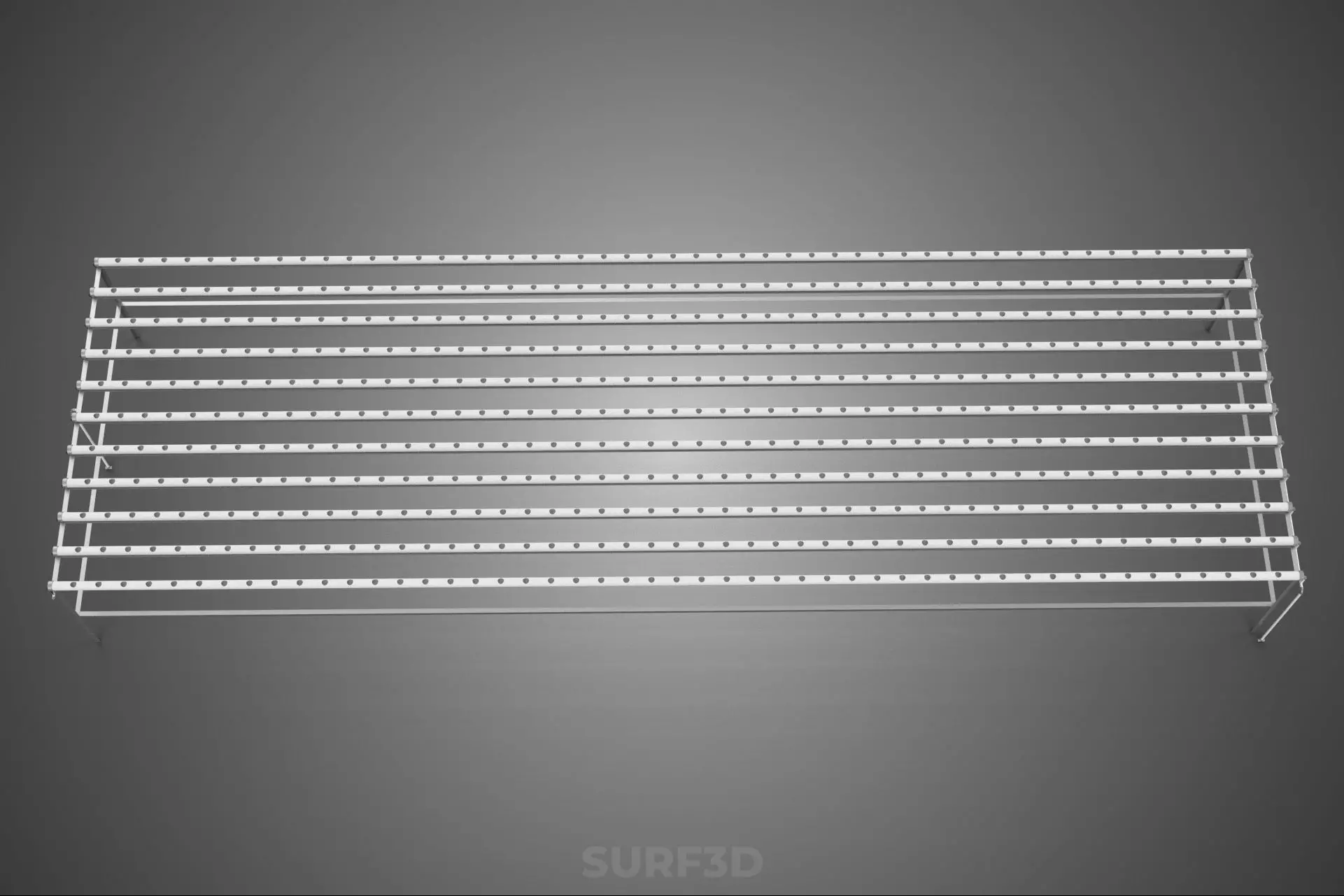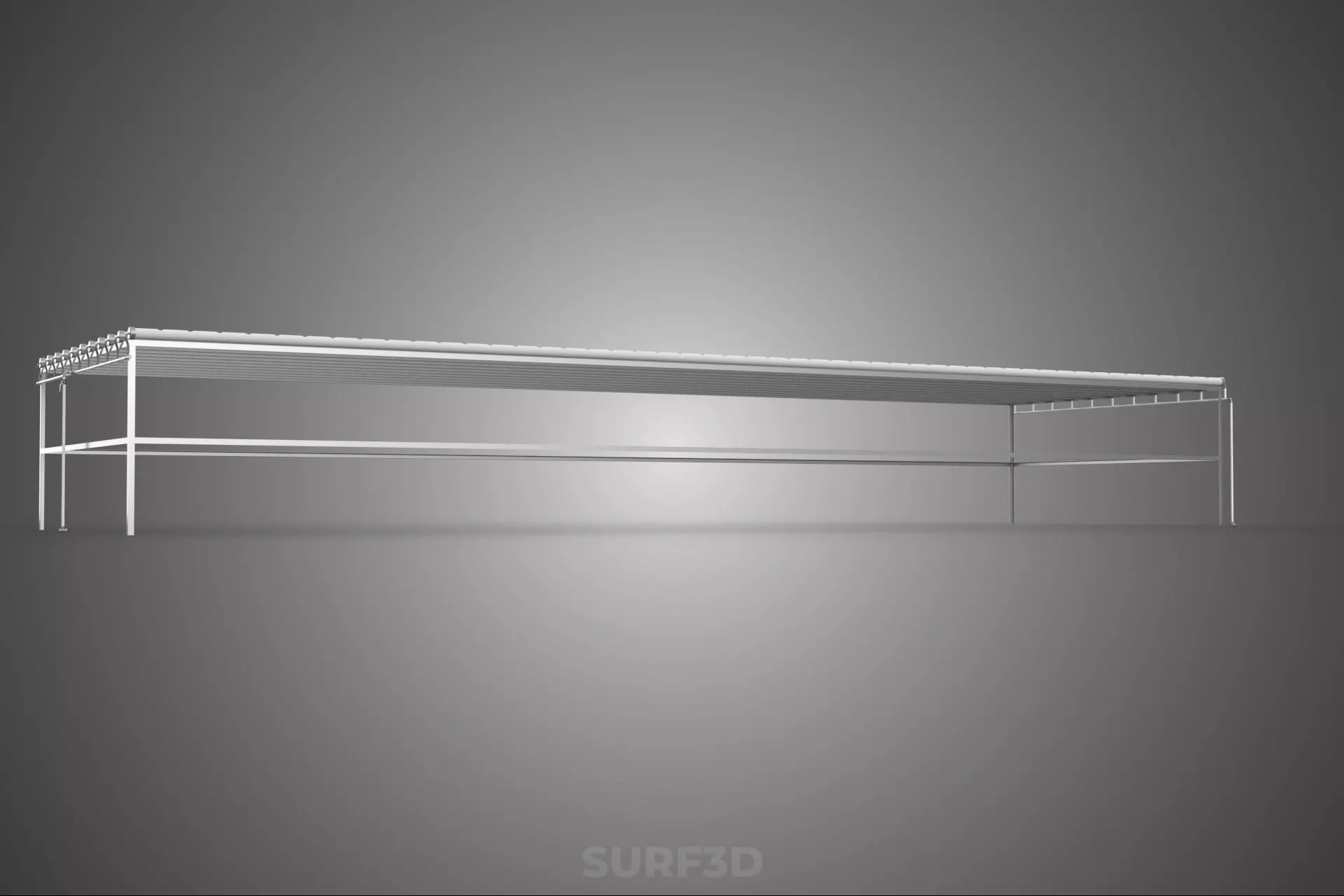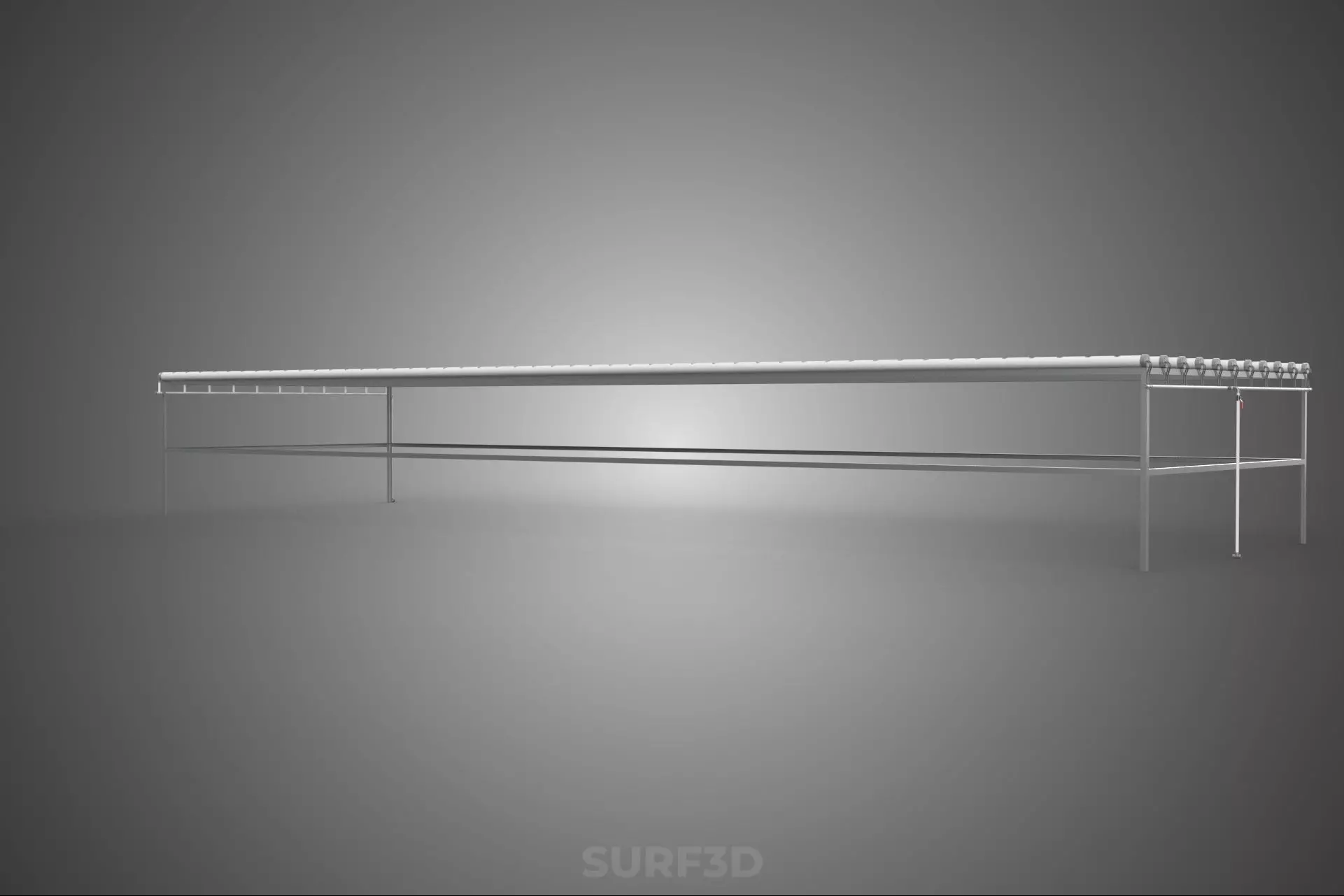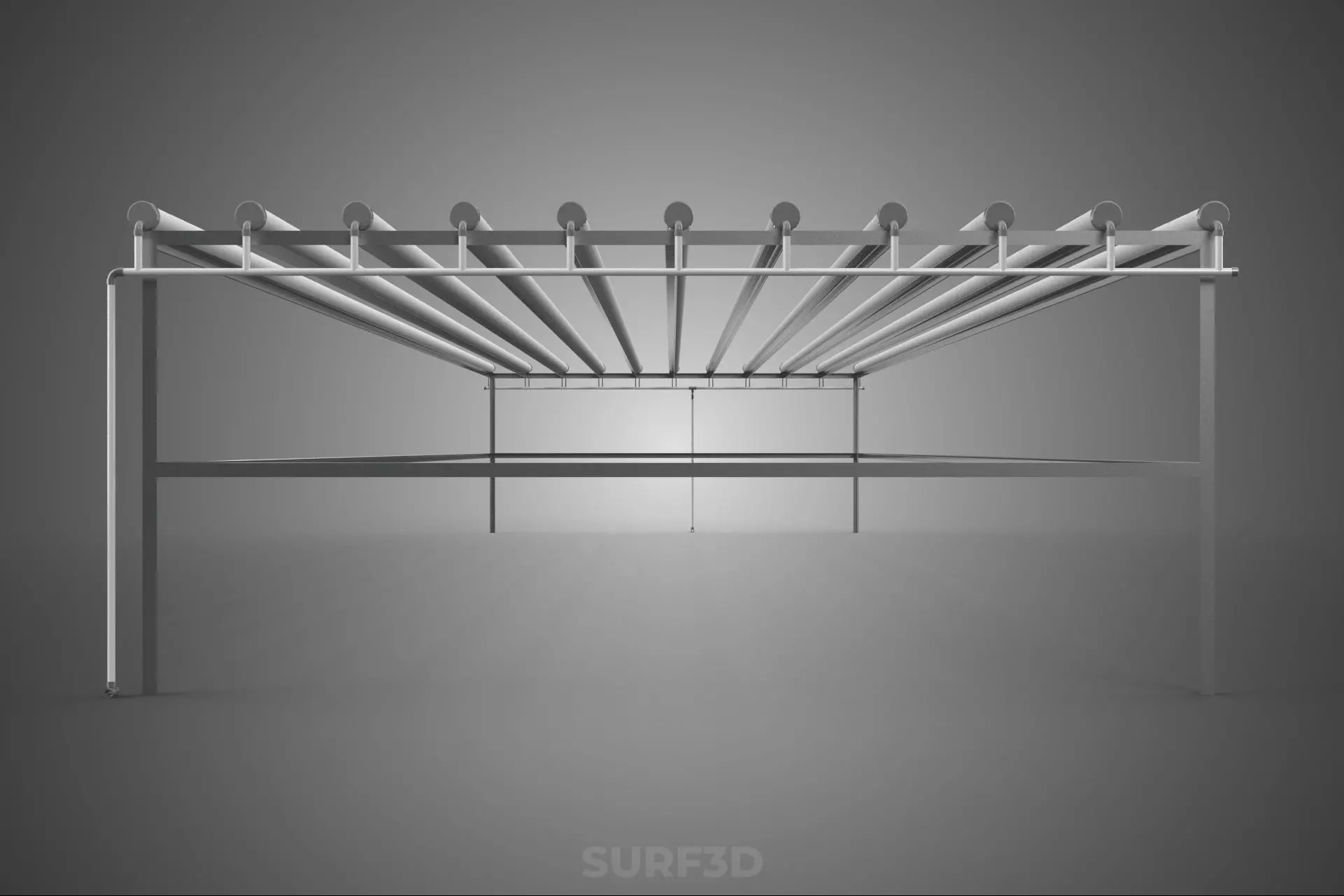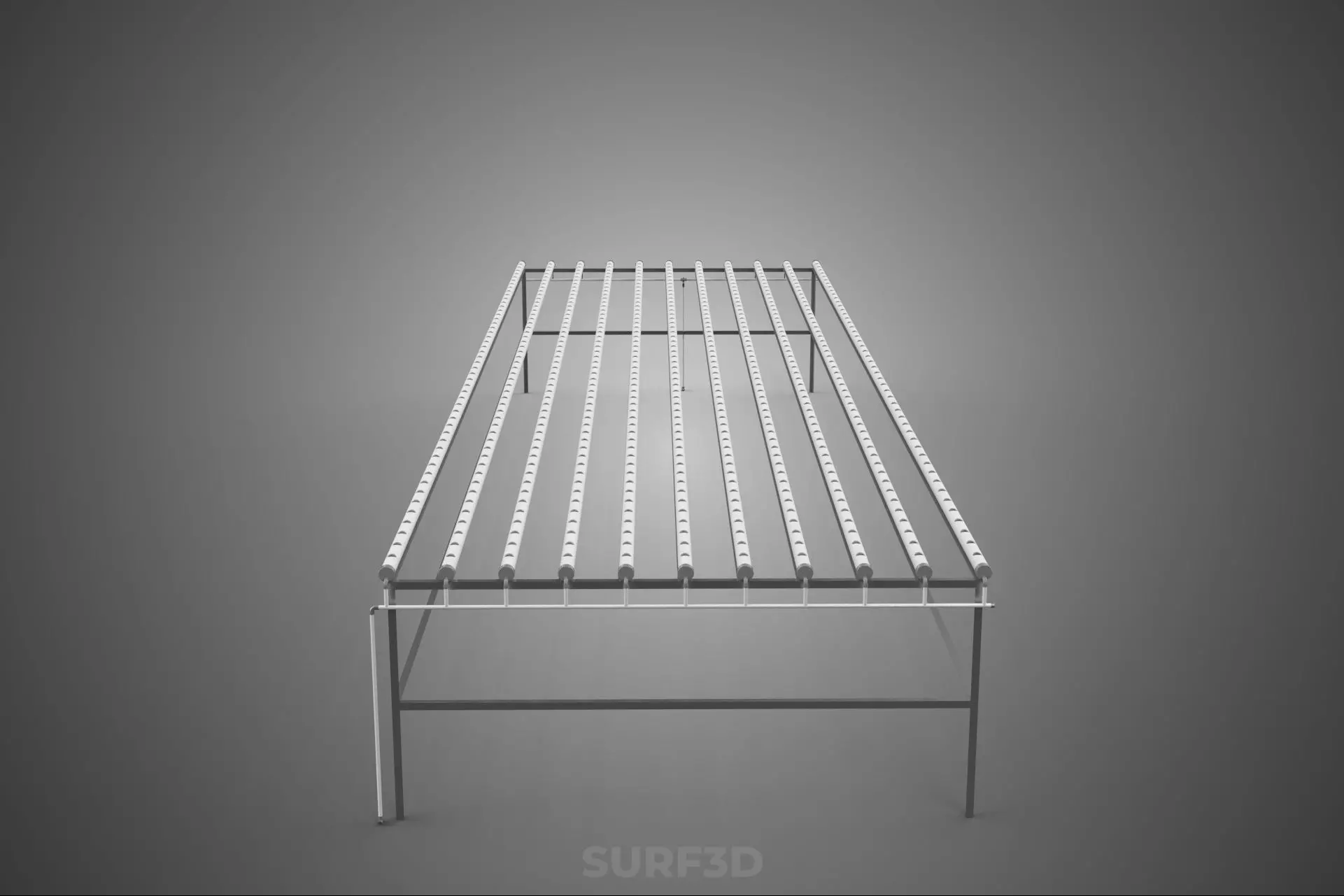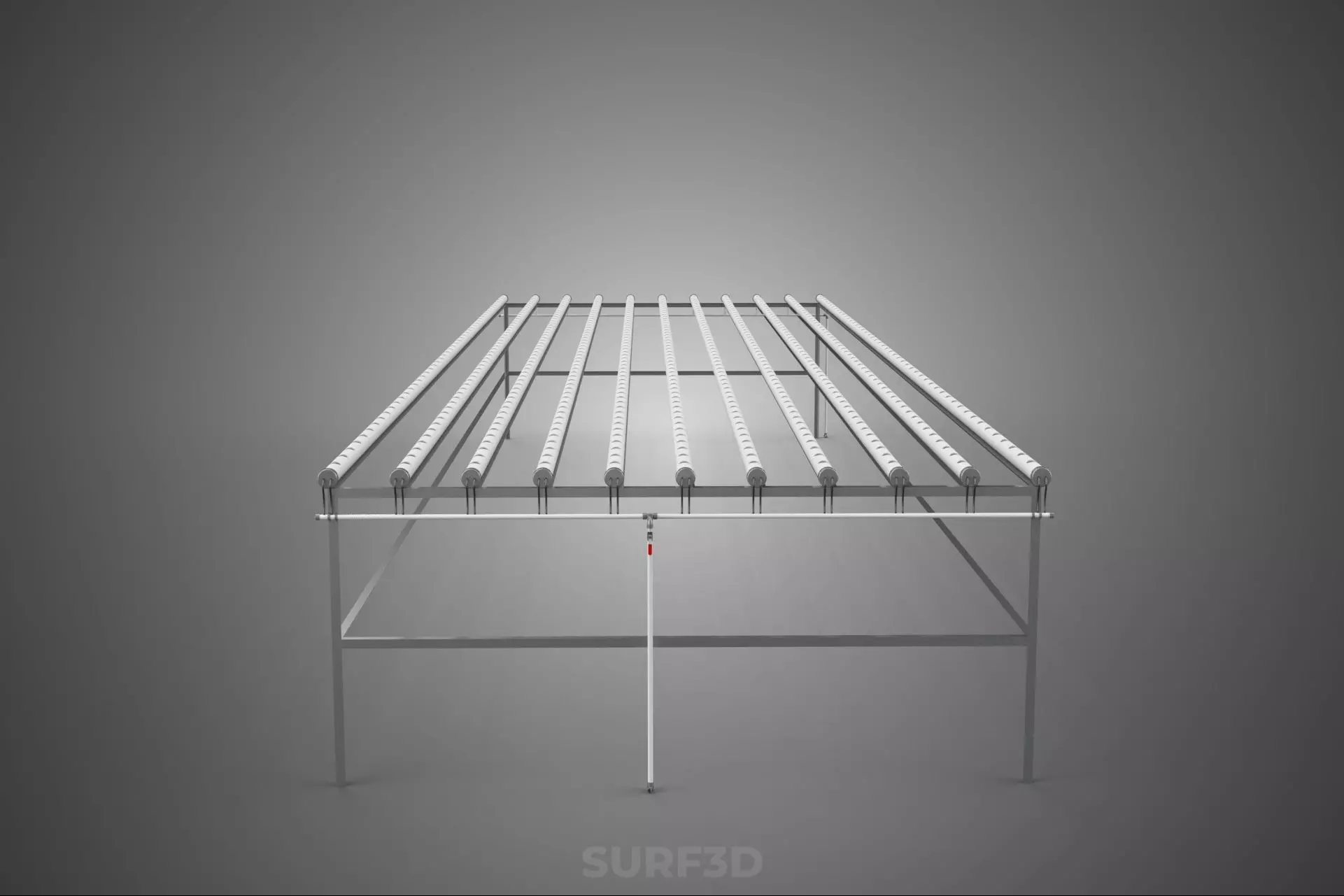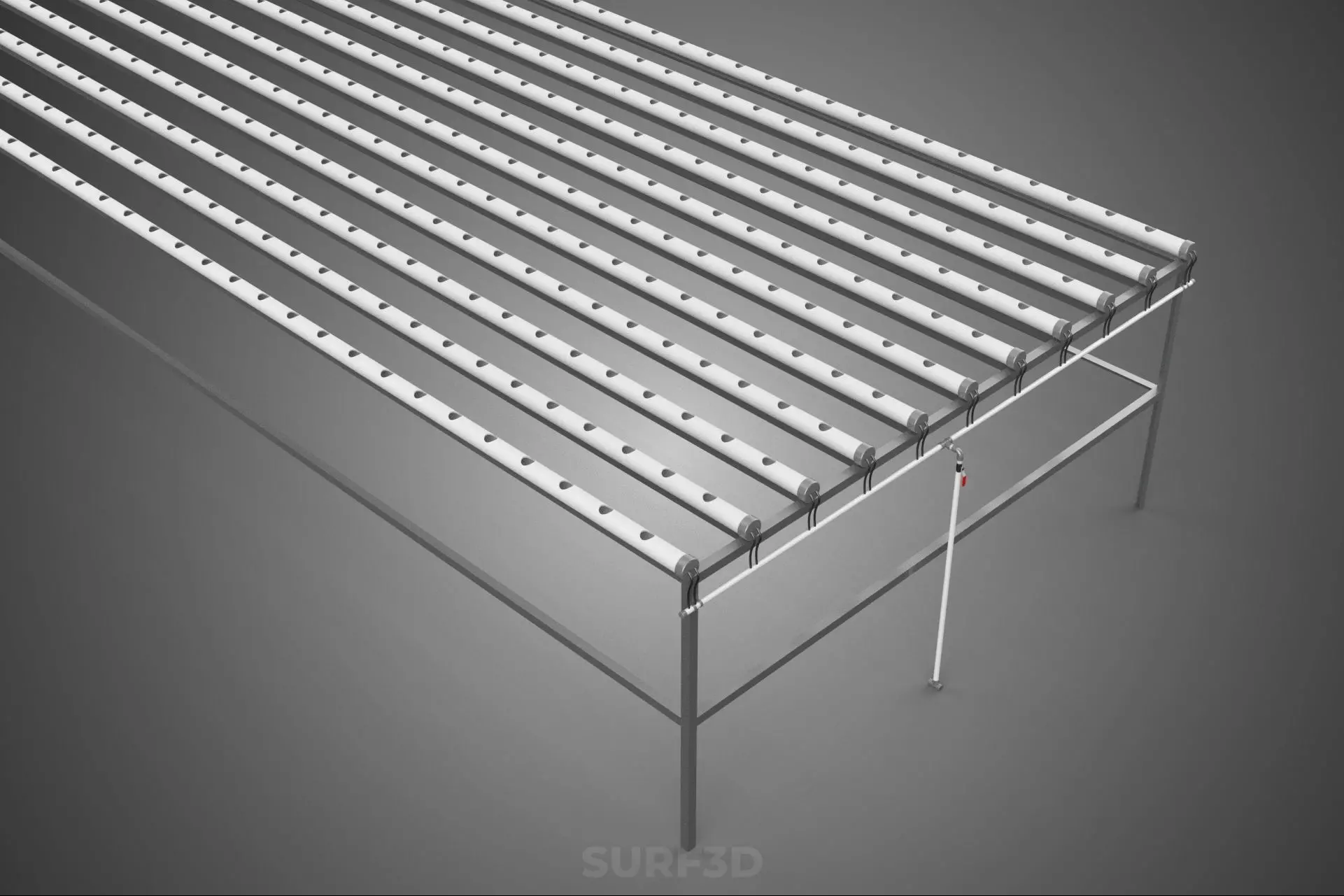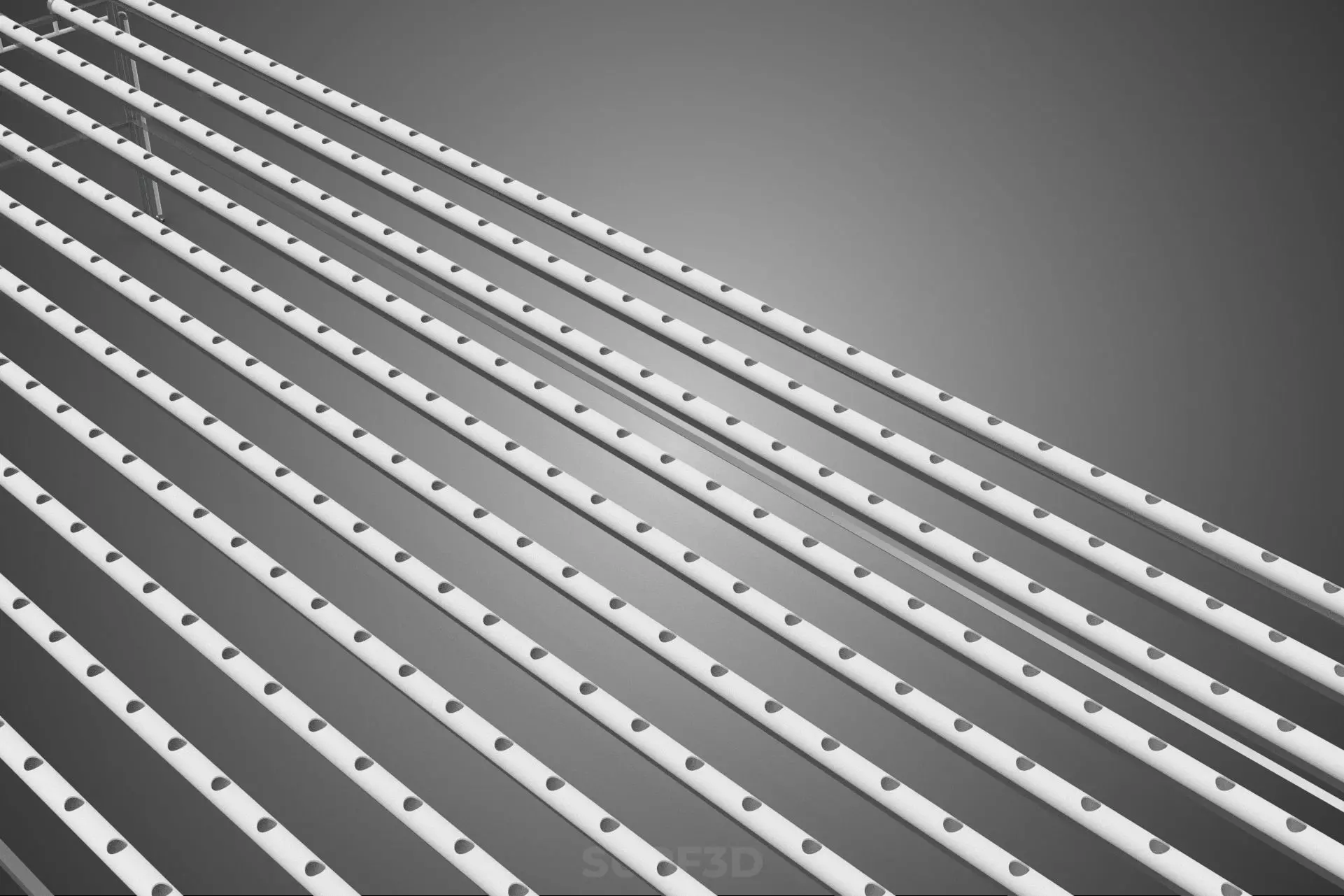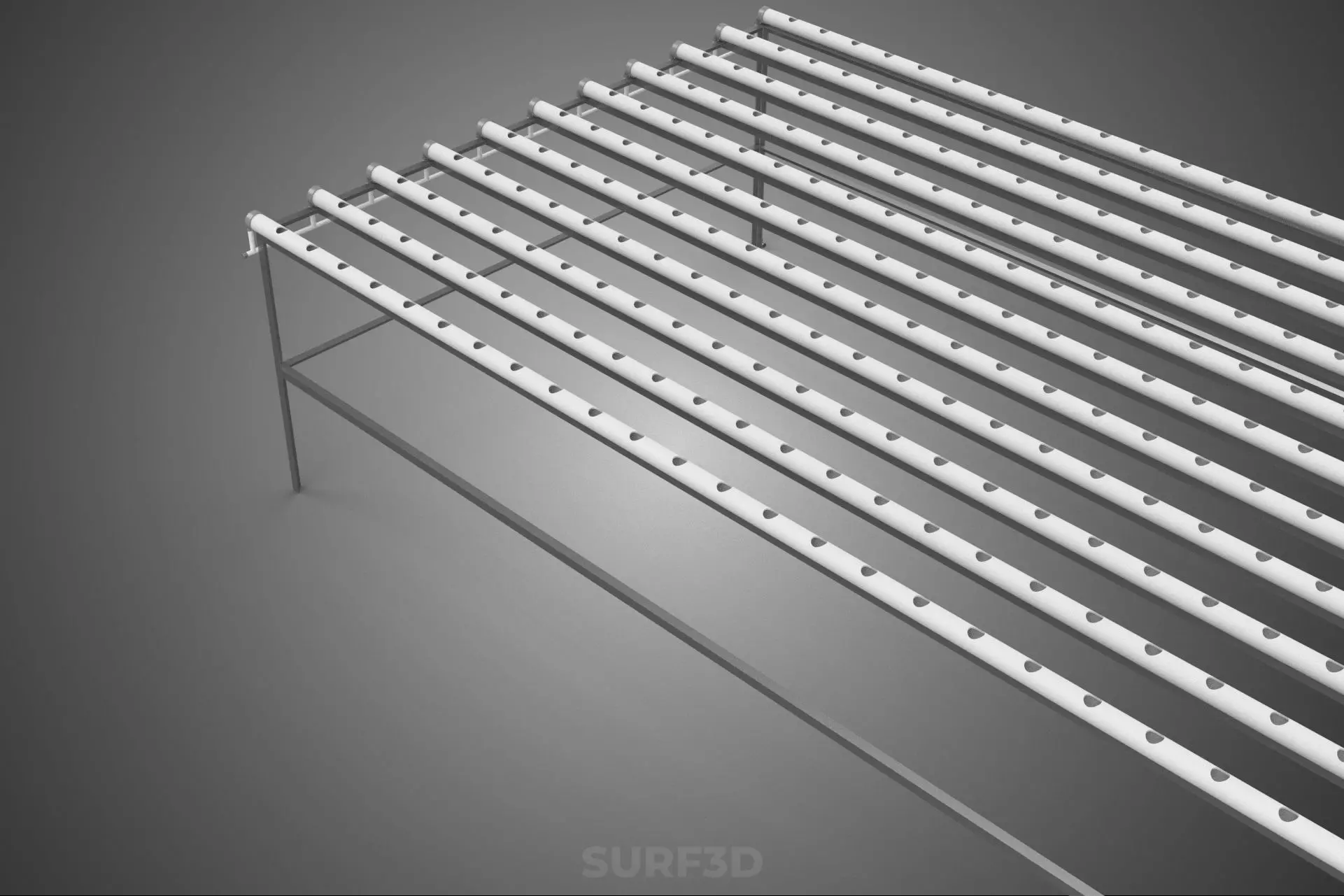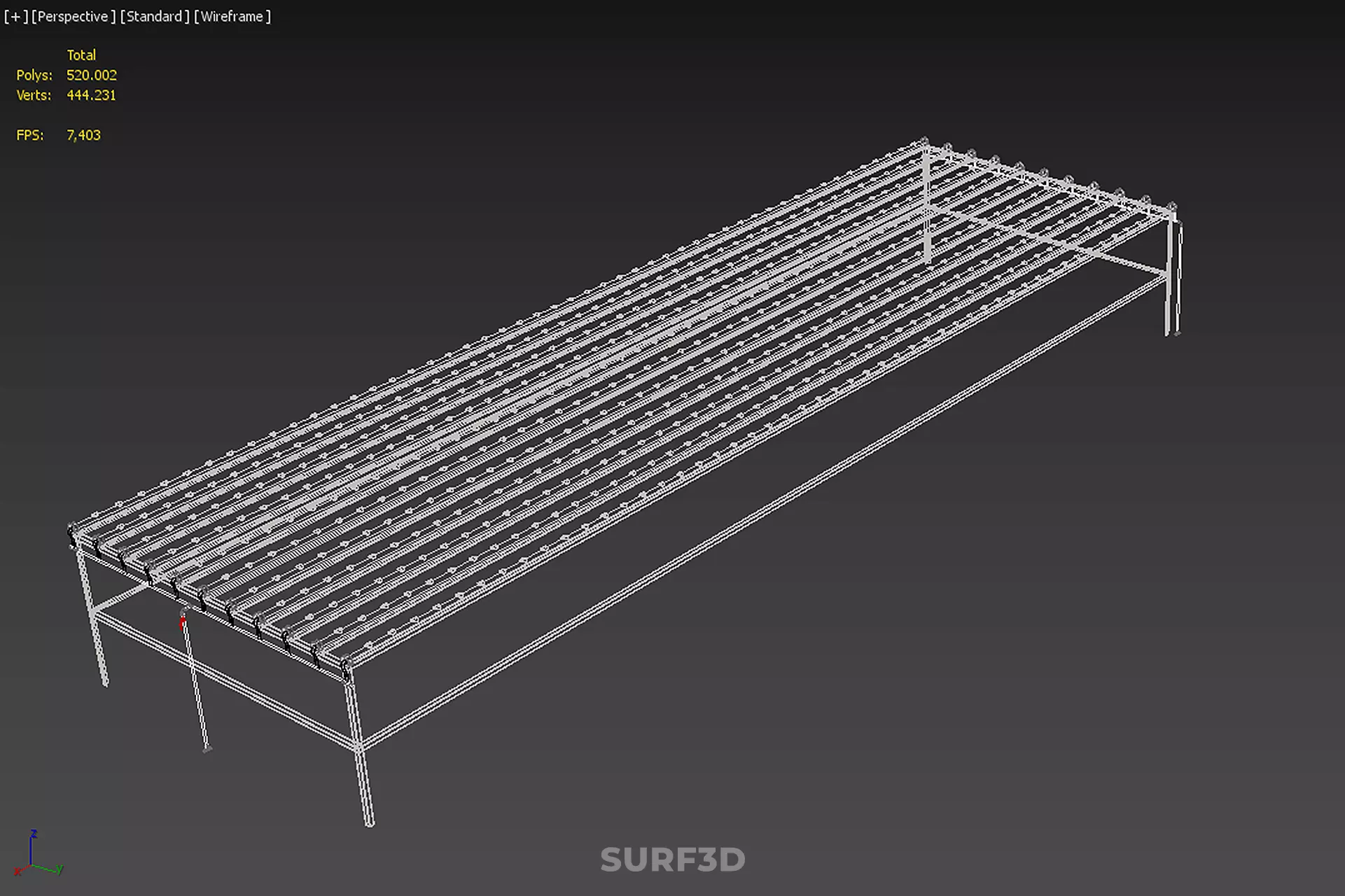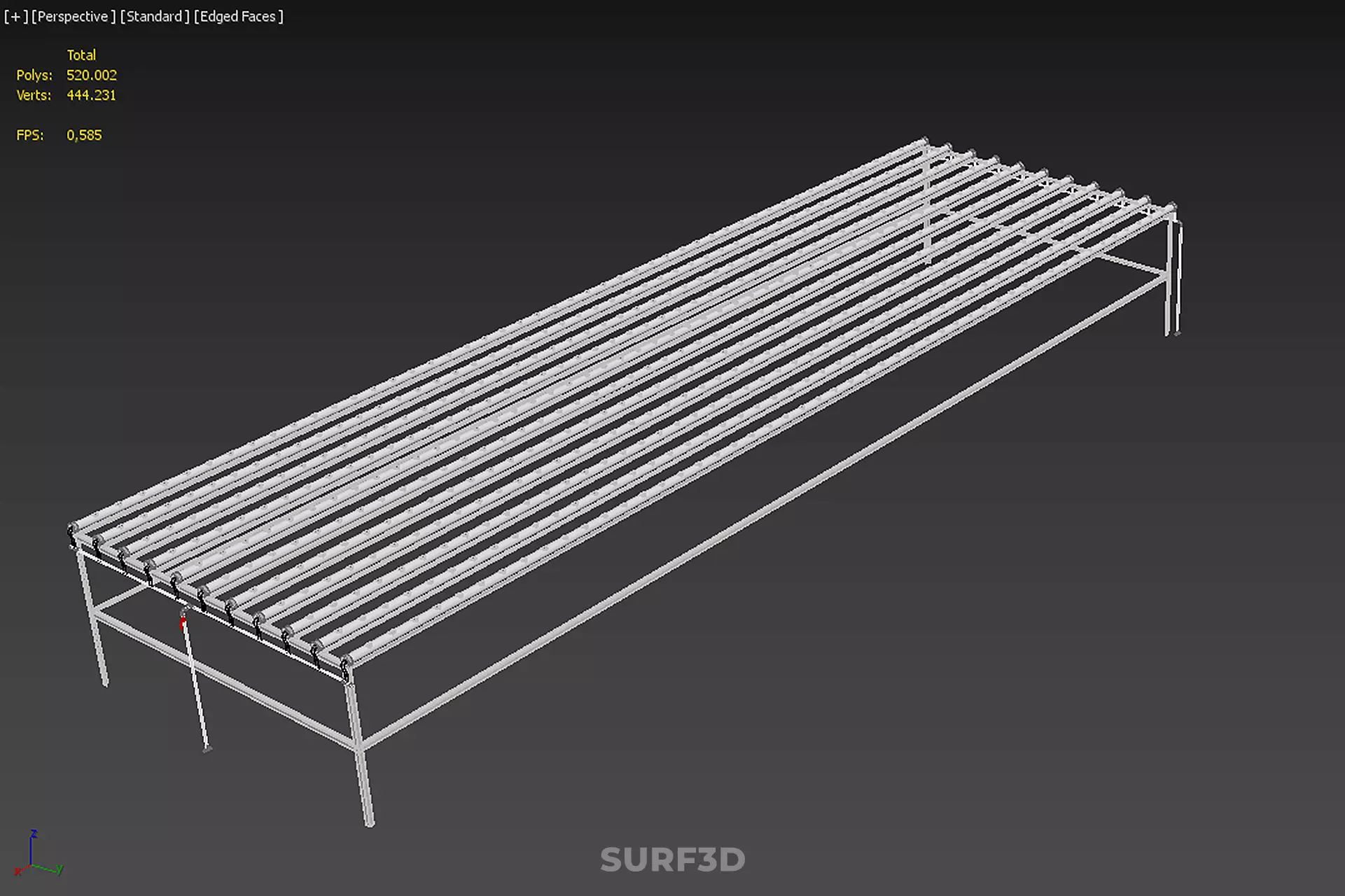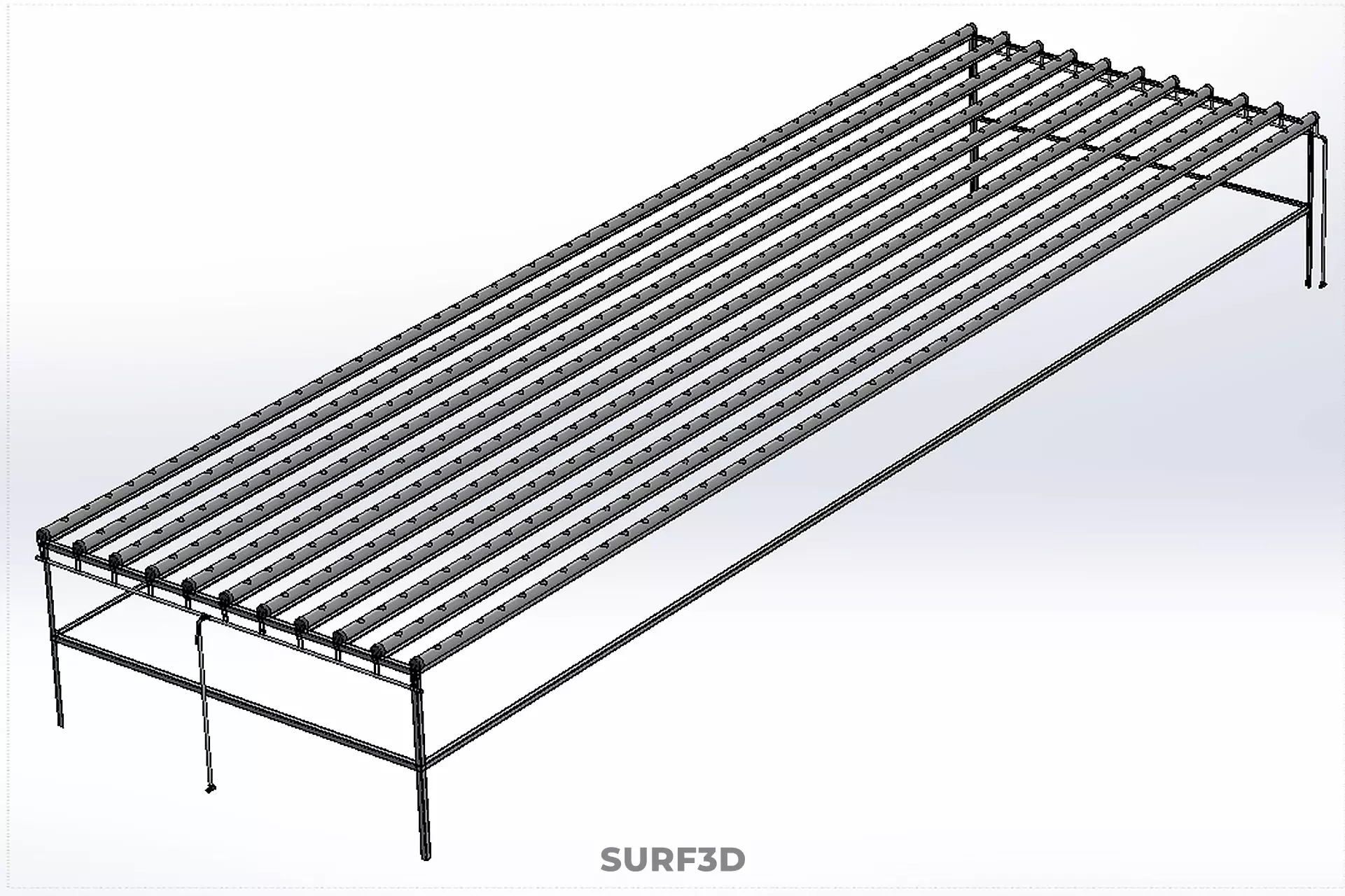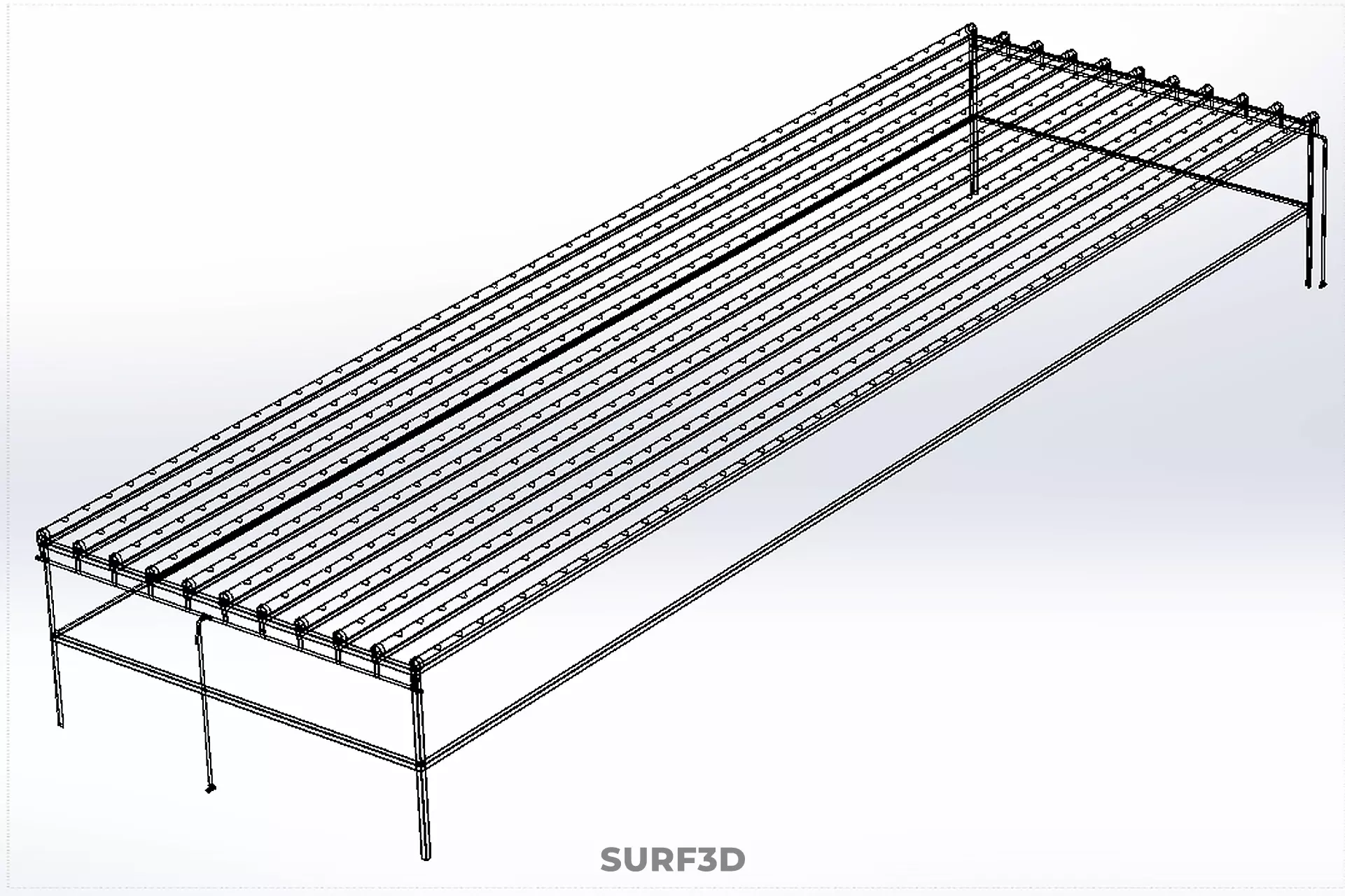
INDUSTRIAL SCALE HYDROPONIC RACK NFT SYSTEM ARRAY GARDEN FARMING 3D model
High-quality 3D assets at affordable prices — trusted by designers, engineers, and creators worldwide. Made with care to be versatile, accessible, and ready for your pipeline.
Included File Formats
This model is provided in 14 widely supported formats, ensuring maximum compatibility:
• - FBX (.fbx) – Standard format for most 3D software and pipelines
• - OBJ + MTL (.obj, .mtl) – Wavefront format, widely used and compatible
• - STL (.stl) – Exported mesh geometry; may be suitable for 3D printing with adjustments
• - STEP (.step, .stp) – CAD format using NURBS surfaces
• - IGES (.iges, .igs) – Common format for CAD/CAM and engineering workflows (NURBS)
• - SAT (.sat) – ACIS solid model format (NURBS)
• - DAE (.dae) – Collada format for 3D applications and animations
• - glTF (.glb) – Modern, lightweight format for web, AR, and real-time engines
• - 3DS (.3ds) – Legacy format with broad software support
• - 3ds Max (.max) – Provided for 3ds Max users
• - Blender (.blend) – Provided for Blender users
• - SketchUp (.skp) – Compatible with all SketchUp versions
• - AutoCAD (.dwg) – Suitable for technical and architectural workflows
• - Rhino (.3dm) – Provided for Rhino users
Model Info
• - All files are checked and tested for integrity and correct content
• - Geometry uses real-world scale; model resolution varies depending on the product (high or low poly)
• • - Scene setup and mesh structure may vary depending on model complexity
• - Rendered using Luxion KeyShot
• - Affordable price with professional detailing
Buy with confidence. Quality and compatibility guaranteed.
If you have any questions about the file formats, feel free to send us a message — we're happy to assist you!
Sincerely,
SURF3D
Trusted source for professional and affordable 3D models.
More Information About 3D Model :
The Industrial Scale Hydroponic Rack NFT System Array Garden Farming is a highly specialized implementation of Controlled Environment Agriculture (CEA) designed for maximizing crop yield within a minimal physical footprint, primarily utilizing vertical farming architecture and the Nutrient Film Technique (NFT). This system represents a convergence of modern hydroponics, sophisticated engineering, and scalable operational logistics suitable for commercial, high-throughput food production.
The core functionality relies on the Nutrient Film Technique (NFT), a circulating hydroponic method where a shallow, continuous stream (film) of nutrient-rich solution flows over the bare roots of plants housed in channels or gutters. This film provides the necessary water, mineral nutrients, and oxygenation, as the roots are partially exposed to air above the nutrient stream.
To achieve industrial scale efficiency, the NFT channels are integrated into multi-tiered vertical racks. These structures—typically constructed from durable, non-corrosive materials such as food-grade polyvinyl chloride (PVC), aluminum, or galvanized steel—can stack cultivation levels six to ten high, or more, depending on ceiling height and structural load requirements. This vertical arrangement, often referred to as a rack array, dramatically increases the Cultivation Area Ratio (CAR), which is the ratio of growing space to floor space.
-
Gutter Channels (Troughs): These are sloped channels (typically a 1-2% gradient) that house the plants, usually supported in net pots or inert media cubes (e.g., rockwool or coco coir) during the initial stages. The design ensures the nutrient solution flows efficiently by gravity.
-
Reservoir and Pumping System: A centralized reservoir stores the bulk nutrient solution. Submersible pumps cycle the solution upwards to the highest tier of the rack array.
-
Delivery and Return Manifolds: The solution is distributed via manifolds to the individual NFT channels on each tier. After flowing down the channels, the solution collects in return gutters and flows back to the central reservoir, creating a closed-loop recirculating system. This minimizes water and nutrient waste.
-
Environmental Control: Industrial systems mandate precise control over key environmental variables, typically managed by sophisticated automation systems (SCADA or dedicated CEA controllers):
-
Lighting: High-efficiency LED grow lights are essential, positioned optimally between tiers to provide Photosynthetically Active Radiation (PAR) tailored to the specific crop and growth phase.
-
Climate: HVAC systems regulate temperature and humidity. Dehumidification is critical due to high evapotranspiration rates in confined vertical spaces.
-
Nutrient Management: Sensors monitor the Electrical Conductivity (EC) to gauge nutrient concentration and the pH level to ensure optimal nutrient uptake, with automatic dosing pumps adjusting these parameters.
-
CO2 Enrichment: Carbon dioxide levels are often supplemented to 1000–1500 parts per million (ppm) to boost photosynthetic efficiency.
### Advantages of Industrial Rack NFT Systems
-
Space Efficiency: Maximized production per square meter of facility floor space (high CAR).
-
Resource Conservation: Significant reduction in water consumption (up to 95% less than traditional field farming) due to recirculation. Precise nutrient dosing reduces fertilizer runoff.
-
Year-Round Production: Controlled environments eliminate seasonal constraints and weather risks, enabling consistent output.
-
Pest and Disease Control: The soilless nature and enclosed environment drastically reduce the incidence of soil-borne pathogens and pests, minimizing or eliminating the need for chemical pesticides.
-
Automation and Labor Efficiency: The standardized rack design facilitates integration with automation technologies, including robotic planting, harvesting, and monitoring, lowering operational labor costs over time.
### Applications and Scale
These systems are predominantly used for high-density, fast-growing, low-stature crops, including leafy greens (e.g., lettuce, kale, spinach), herbs (e.g., basil, mint, parsley), and certain small fruits (e.g., strawberries). The industrial scale dictates facilities often span thousands of square meters, producing metric tons of fresh produce annually, frequently located near urban centers to reduce transportation logistics and costs (locally sourced food).
KEYWORDS: Hydroponics, NFT, Vertical Farming, Controlled Environment Agriculture, CEA, Rack Array, Industrial Scale, Recirculating System, Soilless Cultivation, Nutrient Film Technique, SCADA, LED Grow Lights, Resource Efficiency, Automated Farming, Crop Yield, Urban Agriculture, Multi-Tiered System, Climate Control, Nutrient Management, Leafy Greens, High Density Farming, Closed-Loop System, Plant Factory, Commercial Hydroponics, Electrical Conductivity, pH Control, Automation, Gutter Channels, Sustainable Agriculture, PVC Infrastructure.
